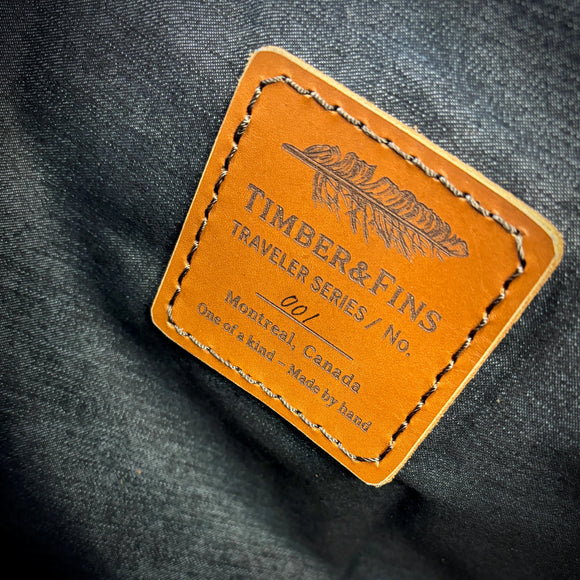While it feels nearly impossible to put the beauty of Margaree into words, this blog post will attempt to do so and only hope that we remotely do it justice…
Margaree and its surrounding areas contain some of the most beautiful scenery one may encounter across the globe. With vegetation that glows so brightly green in this summer that you would assume photos are edited and vibrant fall colours that draw tourists to the Cabot trail from across the world, you will no doubt find yourself simply staring in awe of your surroundings. Mix in a community which feels as though is has resisted the hustle and buzz of modern society and you cannot help but feel a sense of peace while travelling the winding roads of the valley.

During your time on and around the Margaree River you can't help but feel immersed in the angling community. Between many vehicles sporting hood mounts for fly rods and customers outfitted in waders while shopping at the local grocery store or café, you realize how deeply Atlantic salmon angling is engrained within the community. As the case with many Atlantic salmon fisheries, many may argue the river “isn't what it used to be”. However, Margaree still holds one of the most renowned runs of summer and fall salmon in North America. With angling licenses that are less than ¼ the price of many other fisheries, Margaree also provide one of the best values one can find. Whether you love to cast dry flies to holding fish or you live to swing wet flies, this fishery appeals to all.

Now, in considering all of these fantastic qualities the Margaree River has to offer, I must mention that MANY other anglers feel the same. This leads to fish that receive far more “pressure” than smaller rivers across the province. If you are someone looking for a fly fishing getaway in which your arms are sore from catching so many fish per day, this is not the trip for you. If you are someone who feels a fish of a lifetime is worth thousands of casts, then you are in luck.
Suggestions/Tips:
1. Hire a guide. Although Nova Scotia does not require non-residents to hire a guide, it is a very wise decision for the following two key reasons:
(I) Depending on the conditions, different portions of the river are more likely to hold fish than others. By hiring someone with vast experience, they will be able to increase your likelihood of hooking up to a salmon.
(II) Although some pools are clearly marked and easily accessible, there are many (particularly in the upper portions of the river) that are more remote and require some knowledge of access points. Also, with higher water conditions, there are many places requiring river crossings which can be dangerous to those unfamiliar with the river and its structure.
2. Pack for weather extremes. It is not uncommon to see dramatic swings of weather and temperatures in which anglers may go from wearing multiple layers to t-shirts and sunscreen the following day. This is particularly important if you may be planning to camp, as evenings in the Margaree Valley can get rather cool, even in June and July.
3. Familiarize yourself with the local etiquette of pool rotation. Although not common in some other provinces, pool rotation is very much enforced on Atlantic Salmon rivers such as the Margaree.
- Fish in the order of how you arrive to the pool (unless offered otherwise)- Work from the top to bottom of the pool
- 1 casts followed by a step downstream.
- If someone “raises” a fish, they typically get additional time to fish over the same lie (or change flies).
- If someone hooks a fish, reel in your line and exit the pool until the fish is brough to hand.
4. Prepare for lots of river right. It just so happens that majority of the pools on Margaree seem to fish from river right. So especially if you are spey casting, be comfortable casting off both sides of the river.

Fly Choice
Summer (June-Aug/Sep): during much of the summer season you will see an even split of wet and dry fly fishing. Be sure to have dry flies such as bombers and bugs (sz 2-10) and wet fly classics such as black bear green butt, blue charm, cosseboom and green machine (sz 4-12).
Fall (Sep-Oct): typically, during the fall run the flies get bigger and often brighter. Marabou (popsicle, black and blue, slime) and shrimp flies (cascade, Ally’s Shrimp, General Practitioner) are very common during fall, with classic patterns still proving productive as well.
Rod/Reels
Single Hand: rods ranging from 7wt to 9wt are recommended. While salmon have certainly been landed by lighter gear, it is simply not worth the extra strain placed on these fish who are already battling many other challenges to their environment.
Two Handed: Switch and traditional two handed (“spey”) rods have always been around salmon rivers but appear to be growing in popularity even more so in recent years. Rods ranging from 10’6” to 13’ are very common choices that suite the river, however, you may still see those using the 14-15’ traditional spey rods. Depending on water conditions, you may rarely require casts further than 60ft during lower water (with few exceptions). However, if water is high, being able to stretch out to 80-90ft is certainly a benefit (even if only to limit the amount you must wade).
Reels: Simply put, have something that is reliable and allows for 150-200m of backing. Some will argue large arbour is crucial, however, the anglers who have landed thousands of salmon on classic Hardy reels would argue otherwise. If your reel does not have a smooth disc drag, make sure you are comfortable “palming”, as these fish make runs at lightening speed.
Featured collection


The Hillbilly Leather Rod Tube




Traveler Tote — Grizzly Brown






